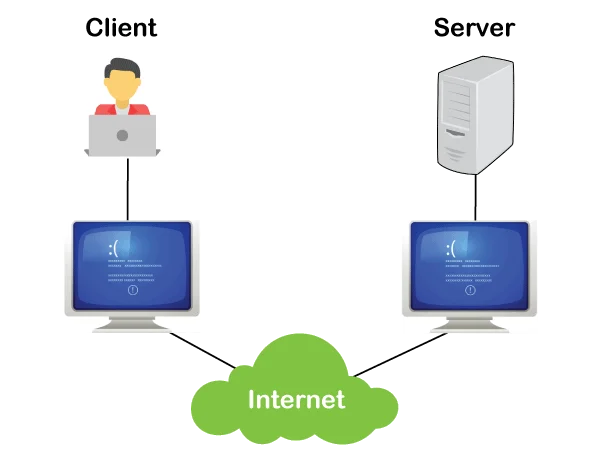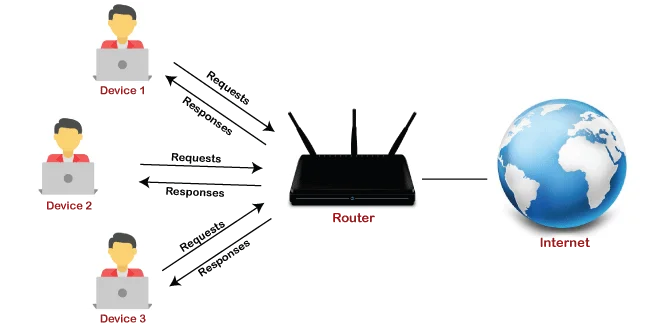In the context of the internet, machines can be classified into two types: clients and servers. A server is a machine that provides services to other machines, while a client is a machine that connects to those services. When a client needs a particular service or function, it sends a request to the server, which then provides the requested service or function.

Client-Server Model
The client-server model is a framework for distributed applications, where tasks are divided between clients and servers that can belong to the same system or communicate over the internet or computer network. The client sends a request for a service, which is provided by the server running the necessary programs and distributing the workload among clients. Communication in the client-server model takes the form of request-response messaging and follows a standard communication protocol known as the TCP/ IP protocol. The TCP protocol is responsible for maintaining a connection until the client-server message exchange is complete, as well as packaging and transmitting data over the network, managing flow control and retransmitting lost or corrupted packets. Meanwhile, the Internet protocol (IP) is connectionless, and each packet of data travels independently over the internet. In a scheduling system, client requests are prioritized and organized to help servers manage a large number of requests from different clients in a short period of time.
When a client sends a connection request to a server, the server may accept or reject the request. If the connection is established, the server will maintain the connection with the client. For instance, to send an email message, a client may request an SMTP connection to the email server, which will then authenticate the client using their email ID and password. If the account information is verified, the email can be sent to the intended recipient by the server. The client-server approach is commonly used by general-purpose computers to expand their capabilities by utilizing shared resources on other hosts, such as network printing, email, and the World Wide Web. This approach is also used in online multiplayer games, such as Blizzard’s Battle.net service, which hosts games like Overwatch, Warcraft, and StarCraft. When a player opens a Blizzard application, they are automatically connected to the Battle.net server. After successfully logging in, players can participate in matches with other gamers, view online players, and engage in chats with other players.

Client-Server Network
The client-server network serves as a means for a central computer to provide resources and services to clients via the wide-area network (WAN) such as the Internet or local area network (LAN). Network traffic is classified into two categories, server-to-server (east-west traffic) or client-to-server (north-south traffic), which includes World Wide Web, file sharing, printing, and email. The centralized management of data and applications is the key advantage of the client-server network.
Difference between Client and Server
Clients, or service requesters, refer to software or hardware components that request services and resources from servers that make them available. Client computing can be divided into three categories:
Thick client: Thick clients provide rich functionality and rely less on the server as they perform most of the data processing.
Thin client: A thin client-server architecture relies on the resources of a host computer and is characterized by its lightweight design. In this architecture, the application server handles the majority of the data processing, leaving the client with minimal computational requirements. This approach can help to improve system performance and reduce the cost and complexity of client devices, making it a popular choice for many organizations seeking to optimize their IT infrastructure.
Hybrid client: This system exhibits characteristics of both thick and thin clients, as it can store persistent data while also relying on the server. Additionally, it is capable of performing local processing.
A server is a computer program that offers functionality to other programs, allowing clients to distribute work and share resources. Examples of servers include:
Application server: This refers to a type of web application hosted by a user on a network for their own use.
Computing server: The server shares a portion of network resources with the connected computers, and if the server has additional RAM and CPU power, it can make it available for personal computers.
Database server: The database server is responsible for managing and sharing a computer program that processes structured data, such as a spreadsheet.
Web server: A web server is a type of software application that hosts web pages and facilitates the existence of the World Wide Web.
We have now covered the topic of Clients and Servers. If you want to learn more about Ethical Hacking, be sure to follow us @ tutorials.freshersnow.com for further information.
